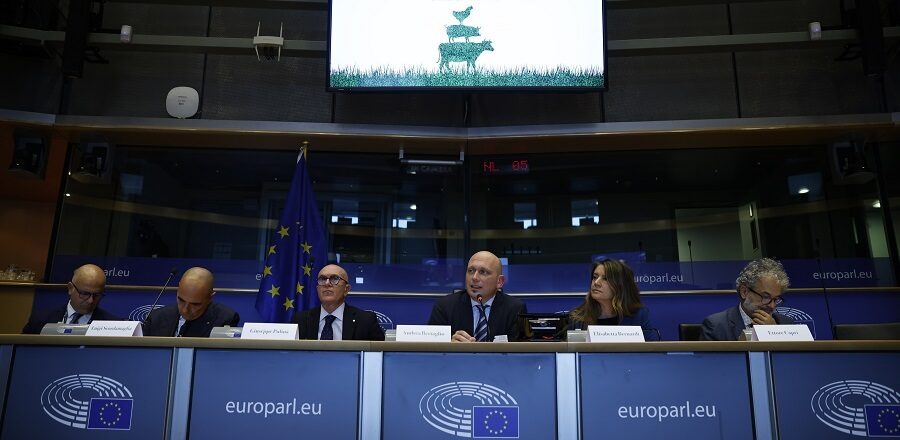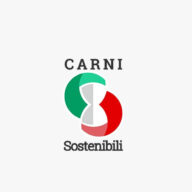
Meat and sustainability a European challenge
Agriculture is the only human activity that, besides emitting carbon, sequesters it: Net emissions in the EU account for 4.6% of the total new metrics revise the impact of the agricultural sector.
The European livestock sector represents 38.5% of the agricultural sector for 206 billion euros with approximately 4 million employees. This is the photograph taken at the European Parliament during the book launch of “Meats and Cured Meats: The New Frontiers of Sustainability”, written by the authors Elisabetta Bernardi, Ettore Capri and Giuseppe Pulina. Franco Angeli publishes the volume in open-access format with the contribution of Carni Sostenibili. This nonprofit organization brings together associations of Italian meat and cured meat producers to promote conscious consumption and sustainable animal-source food production. The event was introduced and promoted by MEP Salvatore De Meo, Chair of the Committee on Constitutional Affairs and Member of the Committee on Agriculture and Rural Development. It was attended, together with the authors, by Luigi Scordamaglia, CEO of Filiera Italia.
MEP Salvatore De Meo: “The transition must be pursued pragmatically”
“Today, the European livestock sector is the core of the environmental challenge” – said MEP De Meo – “but the transition must be pursued pragmatically, without imposition and, above all, without becoming ideological. Sustainability, the goal towards which we must continue to strive, must necessarily be combined with economic and productive development. Businesses and citizens must be guided through the path of the green transition, thus hoping that the next legislature will be open to following this path, recognizing the immense value the European agricultural sector has in the fight against climate change and the green transition.”
Emissions: considering the balance of gas emissions and carbon sequestration of rural systems, the European agricultural sector accounts for 4.6% of the total
Giuseppe Pulina, professor of Ethics and Sustainability of Animal Production at the University of Sassari and president of Carni Sostenibili, spoke about the sector’s environmental impacts. “The European agricultural sector reduced its emissions by more than 18% between 1990 and 2021”. Agriculture is the only human activity that, besides emitting carbon, simultaneously sequesters it. That is why, even when we talk about livestock, we must not only talk about climate-altering emissions but also about the balance between these emissions and carbon sequestration by agroecosystems. “But there is more” – adds the professor –“in recent years, the scientific community and institutions have highlighted the need to develop new metrics to calculate emissions, metrics capable of taking into account the type of climate-altering gases and their permanence in the atmosphere“. As early as 1990, the IPCC stated that all the metrics used until then had limitations and uncertainties. Indeed, to overcome the general uncertainty, a radical revision of the metrics was proposed by the team of atmospheric physicists at the University of Oxford, with several publications in scientific journals of the Nature group. “Thus recalculated, the emissions of the entire European agricultural sector would no longer weigh 11.8% (or 4.6% if offset by reabsorption) of the total, but would even become negative“. But how would you explain such a reduction in impacts, even to the point of making them negative? “The Oxford researchers’ study takes into account for the first time the difference in terms of action on global warming between short-lived climate pollutants, such as methane, and long-lived climate pollutants, such as carbon dioxide,” explains Pulina, noting that “the new metrics recognize this difference and, in particular, how long a gas remains in the atmosphere, a substantial difference if we consider that methane has a half-life of about 10 years, while carbon dioxide remains in the atmosphere for almost a thousand years.”
Meat and nutrition: animal-source food provides 55% of the essential amino acids in world nutrition
On meat and nutrition, Dr Elisabetta Bernardi, nutritionist, biologist and specialist in Food Sciences, highlighted the value of animal-source food in human nutrition: “Recent studies allow us to evaluate the quality of proteins in food concerning the needs of human beings. While it is true that animal-source foods provide only 18% of calories, they also provide 34% of proteins and 55% of essential amino acids. The latter are key parameters in the evaluation of food quality and” – adds Bernardi – “when the environmental footprint of a food of plant or animal origin is calculated, considering the ability of this food to cover human needs for essential amino acids, the ecological footprint of foods of animal origin – both as land use and greenhouse gas emissions – is almost similar or even lower than that related to the production of vegetable proteins. Except for soy, which is not in the Mediterranean tradition.” Then the expert concluded: “Recent studies have also rehabilitated red meat because of the limited scientific evidence and confounding factors (bias) between this food and health risks, and it is always necessary to consider the diet as a whole.”
Livestock and circular economy: Italy is the 4th largest producer of biogas worldwide and 2nd in the EU
Ettore Capri, professor of Agricultural Chemistry at the Università Cattolica del Sacro Cuore, deals with the issue of the sustainability of Italian livestock farms. He points out the Italian model, saying how the Italian livestock system is an advanced circular economy model in Europe and beyond: “In recent years – says Capri – we have witnessed a progressive awareness of the sector that has methodically regenerated resources and reduced waste“. Today, indeed, Italy is the 4th largest producer of biogas in the world, and 2nd in Europe, after Germany. In the same vein goes the development of Carbon Farming activities: “These are a series of agricultural practices aimed at food production” – Capri further explains – “which at the same time can sequester atmospheric carbon more efficiently. It is a natural ecosystem process that livestock farming intensifies, thanks to the primary role played by producing organic matter to be allocated to the soil, according to a principle of circular economy of resources and the development of energy communities on the territories.”
Artificial meat: not to be authorized without fully assessing all the risks
Worldwide, 1.3 billion people owe their livelihood exclusively to livestock-related activities. Luigi Scordamaglia, CEO of Filiera Italia, in his speech, talked about the need to keep alive the link between land and food production: “The answer to the demand for sustainability cannot be to dismantle agricultural activities and delegate the production of what we eat to laboratories”. Specifically on artificial meat, he says: “According to FAO and WHO, there are at least 53 potential dangers to our health related to the possible consumption of artificial meat. We lack the necessary studies that say the consumption of this product, with its added hormones, antibiotics and antifungals needed to grow it, poses no risk.” He then added: “They called us obscurantists, opposed to progress, only because we called for a temporary freeze on such products pending an analysis of the real risks and the adjustment to these emerging, never-before-seen risks in EFSA’s evaluation procedures, which in their complexity will have to be much more similar to those for new drugs that often take many years to evaluate fully, than to those for novel food that can be authorized in a few months.”





